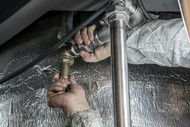Essential Facts About Elbow Fittings for DIY Enthusiasts
12th Feb 2024
Elbow fittings are crucial in any plumbing or DIY project, allowing pipes to turn corners or change directions smoothly. They come in various materials and sizes, each suited for specific installations and pressures. Understanding their differences and applications can save time and prevent leaks in your projects.
In this blog, we'll dive into the essential facts about elbow fittings that every DIY enthusiast should know. Let’s get started!
The Functions of Elbow Fittings
Elbow fittings are more than just connectors in vehicle systems; they are integral to maintaining and enhancing a car's performance. These fittings ensure fluids and gases flow smoothly through various systems, from cooling to exhaust. Their design and placement are critical for vehicles' efficiency, safety, and reliability.
- Coolant Flow Optimization
Elbow fittings guide coolant hoses through tight engine spaces, ensuring efficient heat dissipation and preventing overheating. - Exhaust Direction Control
They withstand high temperatures, directing exhaust gases out, reducing engine noise, and enhancing performance. - Fuel System Efficiency
Elbow fittings connect fuel lines securely, preventing leaks, preserving fuel efficiency, and ensuring vehicle safety. - Air Intake Management
Elbow fittings streamline the air path into the engine, improving airflow and boosting combustion efficiency. - Brake Line Routing
They allow flexible brake line installation, ensuring reliable braking performance in diverse vehicle layouts.
Types of Angles In Elbow Fittings
Elbow fittings come in various angles, each designed for a specific purpose in piping systems. The angle of an elbow determines how it redirects the flow within the pipes, affecting the overall system's performance. Let's explore how the different angles of elbow fittings serve distinct functions in managing fluid dynamics.
1. 90-Degree Elbows
These fittings create a right angle in piping, ideal for sharp turns in systems. They are commonly used in residential and industrial applications, ensuring a compact and efficient layout. The 90-degree angle helps maximize space utilization by allowing pipes to turn in a restricted area.
2. 45-Degree Elbows
Used for more gradual changes in direction, reducing stress on the pipes. This angle is perfect for situations where a softer bend is necessary to maintain flow dynamics. It's often employed in systems requiring a diagonal shift in direction without the abruptness of a 90-degree turn.
3. 22.5-Degree Elbows
These minimize flow resistance and are often used in complex routing for slight bends. Their subtle angle adjustment is ideal for fine-tuning pipe orientation or avoiding obstacles without significantly altering the flow direction. They're instrumental in precision applications where every degree matters.
Maxline Quality Elbows Now Available at JB Tools
At JB Tools, we're proud to be your go-to source for top-tier automotive tools, scanners, and safety kits. Maxline's range of quality elbow fittings is now part of JB Tools' extensive inventory, catering to DIY enthusiasts and professional plumbers. These fittings are engineered for durability and ease of use, ensuring a secure fit and optimal flow in your piping projects. Designed with precision, Maxline elbows meet the highest standards for residential and commercial applications.
Whether re-routing a home water system or setting up complex industrial pipelines, Maxline elbows provide a reliable solution that stands up to pressure and time. Available in various angles, each elbow is crafted to offer seamless integration with your existing setup, making them a smart choice for any project at JB Tools.


